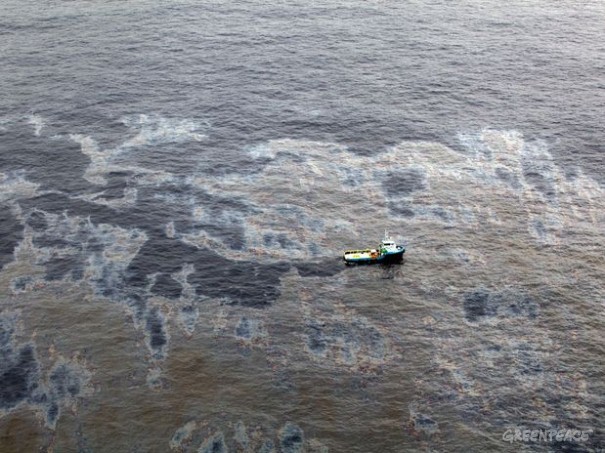On March 24, 1989 one of the greatest environmental disasters in recent history flowed into the pacific ocean. The Exxon Valdez oil tanker traveling from Valdez, Alaska to LA, California, ran aground on Bligh Reef neer Prince William Sound, Alaska. It is not uncommon to have to avoid large sheets of ice in those nearly arctic waters, and the giant oil tanker was outside of its normal route in an attempt to avoid a titanic fate. Instead of hitting the ice, the tanker ran into a reef which tore open the hull of the tanker and damaged 8 of the 11 tanks on board. Within 6 hours of the grouding the Exxon Valdez had succeded in spiling 10.9 gallons of crude oil in to the Prudhoe Bay and affecting over 1,100 miles of coast line.
Any place that an oil spill of this magnetude would have occured would cause immense damage, but it hit one of the most vulnerable places on earth. Alaska is home to many native speices that aren't found anywhere else in the world. Along with that, the wildlife is pretty much the main source of income for the majority of the population. Many species that were depleted are still at exponentiall lower numbers 20 years later. The wildlife living off the coast of alaska is so vulnerable because they have no where else to go. Even for those species that can survive on land their was no warning, no way around the spill. A rough estimate of the number dead was .5 million seabirds, 5,000 sea otters, and 300 or so harbour seals. The communities of fish took the biggest hit with billions of salmon and herring eggs and young fish that didn't survive. With the death of these young fish, a delayed effect was seen about four years later. The fish population plumeted in '93 when the juvenile fish should have been joining the adult populations, and contributing to the new generations numbers. This really hit the vulnerable fishing industry hard, and devestated the people who based their income in fishery. The herring population still hasn't come back, and this has a negative effect on the fragile ocean ecosystem and caused the closure of the herring fisheries.
Aid was dispatched and called in immediately following the devestationg. Not just people from Exxon, but the coast gaurd, locals, scientisits, and people from the national government. Although this was almost an unforgiveable occurance, they did employ all the people and techniques for clean up that they could.
Technologies went into building the Exxon Valdez tanker in order to prevent a disaster, and those were amplified in the wake of this event. Sciece again was relied on during the clean up of the spill. Marine Toxocolgist were utalized to help survey the damage, and they used their data to determine the extent of the damage in order to mitigate the rescure efforts. Now, more than 20 years later, they have sampled water near Prince William Sound, Alaska and have still found leathal concentrations that are readily availae to organisms.
In the end this was one of the most widespread natural disasters in recent history and is still negatively impacting people today. Looking at the big picture there lessons to be learned from this horrific event. Bridging the natural habitat of the ocean - locations of ice drifiting ice sheets, location of reefs, with the technology of today can prevent another spill. It would be extrememly smart to use staellites to survey shipping lanes and then warn ships of the proper routes to use to avoid ice AND reefs. This will help prevent another oil spill and the affects it has on society.
http://www.eoearth.org/article/Exxon_Valdez_oil_spill
http://www.democracynow.org/2009/3/24/20_years_after_exxon_valdez_oil
http://www.enewspf.com/latest-news/science-a-environmental/27597-exxon-valdez-oil-lingering-in-environment-feds-say.html













